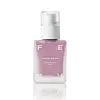What's inside
What's inside
 Key Ingredients
Key Ingredients

 Benefits
Benefits

 Concerns
Concerns

 Ingredients Side-by-side
Ingredients Side-by-side

Dimethicone
EmollientIsononyl Isononanoate
EmollientCetearyl Isononanoate
EmollientTrimethylsiloxyphenyl Dimethicone
Mica
Cosmetic ColorantPolyethylene
AbrasiveDicalcium Phosphate
AbrasiveMyristyl Trisiloxane
EmollientNylon-12
Silica
AbrasivePolymethyl Methacrylate
Dimethicone/Divinyldimethicone/Silsesquioxane Crosspolymer
HumectantTitanium Dioxide
Cosmetic ColorantCI 77891
Cosmetic ColorantIron Oxides
CI 77492
Cosmetic ColorantCI 77491
Cosmetic ColorantCI 15850
Cosmetic ColorantPentaerythrityl Tetra-Di-T-Butyl Hydroxyhydrocinnamate
AntioxidantCaprylic/Capric Triglyceride
MaskingCamellia Sinensis Leaf Extract
AntimicrobialBHT
AntioxidantDimethicone, Isononyl Isononanoate, Cetearyl Isononanoate, Trimethylsiloxyphenyl Dimethicone, Mica, Polyethylene, Dicalcium Phosphate, Myristyl Trisiloxane, Nylon-12, Silica, Polymethyl Methacrylate, Dimethicone/Divinyldimethicone/Silsesquioxane Crosspolymer, Titanium Dioxide, CI 77891, Iron Oxides, CI 77492, CI 77491, CI 15850, Pentaerythrityl Tetra-Di-T-Butyl Hydroxyhydrocinnamate, Caprylic/Capric Triglyceride, Camellia Sinensis Leaf Extract, BHT
Water
Skin ConditioningMethyl Trimethicone
Skin ConditioningDimethicone
EmollientCetyl Ethylhexanoate
EmollientIsononyl Isononanoate
EmollientAlcohol Denat.
AntimicrobialPolybutene
Polypropylsilsesquioxane
Butylene Glycol
HumectantGlycerin
HumectantPEG-10 Dimethicone
Skin ConditioningPentylene Glycol
Skin ConditioningVinyl Dimethicone/Methicone Silsesquioxane Crosspolymer
1,2-Hexanediol
Skin ConditioningBetulin
Skin ConditioningChlorella Vulgaris Extract
Skin ConditioningGlucose
HumectantFructooligosaccharides
HumectantFructose
HumectantDisteardimonium Hectorite
StabilisingMagnesium Sulfate
Bis-Diglyceryl Polyacyladipate-2
EmollientEthylhexylglycerin
Skin ConditioningTrisodium Ethylenediamine Disuccinate
Triethoxycaprylylsilane
Aluminum Hydroxide
EmollientCetyl PEG/PPG-10/1 Dimethicone
EmulsifyingMica
Cosmetic ColorantCI 77007
Cosmetic ColorantCI 77492
Cosmetic ColorantCI 77891
Cosmetic ColorantCI 73360
Cosmetic ColorantTocopherol
AntioxidantWater, Methyl Trimethicone, Dimethicone, Cetyl Ethylhexanoate, Isononyl Isononanoate, Alcohol Denat., Polybutene, Polypropylsilsesquioxane, Butylene Glycol, Glycerin, PEG-10 Dimethicone, Pentylene Glycol, Vinyl Dimethicone/Methicone Silsesquioxane Crosspolymer, 1,2-Hexanediol, Betulin, Chlorella Vulgaris Extract, Glucose, Fructooligosaccharides, Fructose, Disteardimonium Hectorite, Magnesium Sulfate, Bis-Diglyceryl Polyacyladipate-2, Ethylhexylglycerin, Trisodium Ethylenediamine Disuccinate, Triethoxycaprylylsilane, Aluminum Hydroxide, Cetyl PEG/PPG-10/1 Dimethicone, Mica, CI 77007, CI 77492, CI 77891, CI 73360, Tocopherol
 Reviews
Reviews

Ingredients Explained
These ingredients are found in both products.
Ingredients higher up in an ingredient list are typically present in a larger amount.
Ci 77492 is also hydrated iron III oxide. It's sole purpose is to give a yellow hue to products.
Iron III oxides are classified as inorganic chemicals for coloring.
Synthetically created Ci 77492 is considered safer than those naturally found. This is because the synthetically created version may contain less impurities. Iron oxides are generally non-toxic and non-allergenic.
Learn more about CI 77492Ci 77891 is a white pigment from Titanium dioxide. It is naturally found in minerals such as rutile and ilmenite.
It's main function is to add a white color to cosmetics. It can also be mixed with other colors to create different shades.
Ci 77891 is commonly found in sunscreens due to its ability to block UV rays.
Learn more about CI 77891Dimethicone is a type of synthetic silicone created from natural materials such as quartz.
What it does:
Dimethicone comes in different viscosities:
Depending on the viscosity, dimethicone has different properties.
Ingredients lists don't always show which type is used, so we recommend reaching out to the brand if you have questions about the viscosity.
This ingredient is unlikely to cause irritation because it does not get absorbed into skin. However, people with silicone allergies should be careful about using this ingredient.
Note: Dimethicone may contribute to pilling. This is because it is not oil or water soluble, so pilling may occur when layered with products. When mixed with heavy oils in a formula, the outcome is also quite greasy.
Learn more about DimethiconeIsononyl Isononanoate is a synthetic skin-conditioner and texture enhancer. It is created from nonanoic acid, a fatty acid found in cocoa and lavender oil.
As an emollient, Isononyl Isononanoate helps keep your skin soft and smooth. This is because emollients create a barrier on the skin to trap moisture in.
Isononyl Isononanoate helps give products a velvet feel and improves spreadability.
Learn more about Isononyl IsononanoateMica is a naturally occurring mineral used to add shimmer and color in cosmetics. It can also help improve the texture of a product or give it an opaque, white/silver color.
Serecite is the name for very fine but ragged grains of mica.
This ingredient is often coated with metal oxides like titanium dioxide. Trace amounts of heavy metals may be found in mica, but these metals are not harmful in our personal products.
Mica has been used since prehistoric times throughout the world. Ancient Egyptian, Indian, Greek, Roman, Aztec, and Chinese civilizations have used mica.
Learn more about Mica